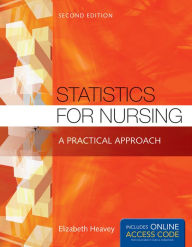 The second edition of Statistics for Nursing: A Practical Approach has recently been added to our @RittenhouseBKS R2 Digital Library. This resource presents the complicated topic of statistics in an understandable manner for entry level nurses. The text gives students the opportunity to practice statistics while they learn statistics, by including relevant clinical examples followed by end-of-chapter application exercises. The top ten statistical techniques used throughout nursing are covered very clearly in the text and without any irrelevant complicating concepts. This text is ideal for both undergraduate nursing research students who need to learn how to critically analyze literature, as well as graduate DNP students who must be familiar with statistics for nursing in accordance with the rigor of the DNP program.
The second edition of Statistics for Nursing: A Practical Approach has recently been added to our @RittenhouseBKS R2 Digital Library. This resource presents the complicated topic of statistics in an understandable manner for entry level nurses. The text gives students the opportunity to practice statistics while they learn statistics, by including relevant clinical examples followed by end-of-chapter application exercises. The top ten statistical techniques used throughout nursing are covered very clearly in the text and without any irrelevant complicating concepts. This text is ideal for both undergraduate nursing research students who need to learn how to critically analyze literature, as well as graduate DNP students who must be familiar with statistics for nursing in accordance with the rigor of the DNP program.
Statistics for Nursing: A Practical Approach may be accessed through the R2 Digital Library or by searching Summon.